November Gathering
.jpg) Our November gathering will once again honor the 23 RAF Flight Cadets who lost their lives during flight training at #4 British Flying Training School (which became Mesa's Falcon Field) in the early years of WW2. Our November gathering will once again honor the 23 RAF Flight Cadets who lost their lives during flight training at #4 British Flying Training School (which became Mesa's Falcon Field) in the early years of WW2.
Please join us at the Memorial Service when V.P. David McBee will present a wreath on behalf of the Society.
Sunday November 13, 2016
Mesa City Cemetery
1212 N. Center St., Mesa AZ
10:45 AM
Lunch will follow at the Harp Pub
1744 S. Val Vista, Mesa
|
Letter from the Editor, Don Finch
Dear fellow Caledonians:
Scots of the Valley, the Society needs your support. There are several items we wish to bring to your attention…
- Local musician Jane Hilton is in the fight of her life, literally. Please read the announcement below about a benefit concert for her on Sunday, November 13th
- Earlier on November13th, VP David McBee will present a wreath at the RAF Cadet Memorial Service, 10:45 am, Mesa City Cemetery, 1212 N Center Street
- On Sunday November 20th, All Saints Episcopal Church, 6300 N. Central Avenue in Phoenix celebrates St. Andrew’s Day with their annual performance by the Mesa Caledonian Pipe Band at the 11:00 am worship service.
- Please consider renewing your 2017 Membership a bit early – with the Scottish Games moved forward to March 4th and 5th, our cashflow needs a boost!
- There are lots of tickets available for the St. Andrew’s Day Dinner & Dance on Saturday December 3rd at the Phoenix Country Club. This will be our formal event for the season, and our Christmas party. We’re joining Fuil Celtic for an informal Robbie Burns Supper on January 21st at The Dubliner Pub, so December 3rd is THE night for peacocks to strut and the lassies to dazzle. Go to the ‘Buy Now’ button below the announcement poster on our website.
On behalf of all the Board members, we appreciate your support throughout the year, and especially at the Highland Games. Under VP Paul Bell’s leadership, we ‘ve changed the name to the Phoenix Scottish Games and the date to the weekend of March 4th and 5th, 2017. Please contact him if you’d like to volunteer on a committee, or the weekend itself. vpgames@arizonascots.com

Thanks to VP Mark Pelletier for organizing our Annual General Meeting and Scotstoberfest at Haus Murphy’s in Glendale on October 13th. This has become our best attended monthly Gathering – please let us know why- email me at president@arizonascots.com
Finally, Happy Thanksgiving! Don Finch, Editor
|
|
Benefit Concert for Jane Hilton
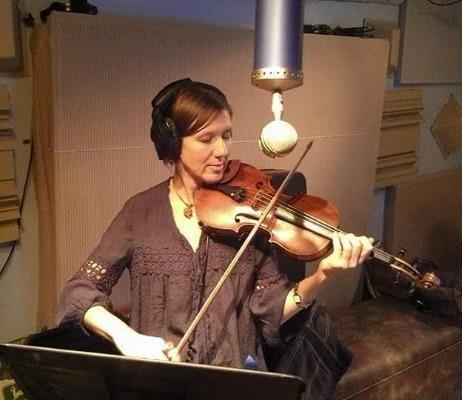 Fundraising Concert for Fundraising Concert for
Jane Hilton's Cancer Treatment Fund
Sunday, November 13th
6.00 pm - 10.00 pm
Irish Cultural Center
It is with great sadness that we share the news that Jane Hilton, violinist with Stoneybank, has lost her valiant battle against cancer. The Go-Fund-Me account is still open and the concert will proceed, each to help cover the medical costs remaining.
Jane was a highly-regarded, nationally-recognized musician. She requently performed at Caledonian Society events both solo and as an integral part of Iain Walinck’s band, Stoneybank.
This will be a Benefit concert, dedicated to Jane, featuring local bands, fiddlers, classical string quartets, and folk musicians from around the country.
There will be a silent auction in addition to the concert, and we are currently collecting donations of goods and services for this event. Please help us if you can, by contacting local businesses or offering to donate. Food and drink vendors will be at the concert as well.
You can donate to Jane’s Go-Fund-Me account: www.gofundme.com/2qvuxfw
For more information, or for an opportunity to help and/or perform at this benefit concert, please contact either:
-- Amber Dudley 480-332-8784 classicfiddler@hotmail.com
-- Jan Murphy azirishvolunteers@gmail.com
|
|
Research Your Scottish Ancestry
Types of Records and Resources
by Robert M. Wilbanks IV, B.A.
Chief Genealogist & Historian, C.S.A.
genealogy@arizonascots.com
 In our everyday lives, we find paperwork to regularly be an overwhelming part of our day-to-day living. Whether dealing with the bank, the doctor, insurance companies, or filing a new deed, probating a will, filing for Social Security, or serving in the military, the bureaucratic process infiltrates every part of our daily existence. Throughout history, bureaucracy is an integral constant in any country around the world. In our everyday lives, we find paperwork to regularly be an overwhelming part of our day-to-day living. Whether dealing with the bank, the doctor, insurance companies, or filing a new deed, probating a will, filing for Social Security, or serving in the military, the bureaucratic process infiltrates every part of our daily existence. Throughout history, bureaucracy is an integral constant in any country around the world.
The fact is, as much as we hate it in our everyday lives, bureaucracy is a genealogist’s best friend. The bureaucratic process generates a great wealth of documents. A vast number of records. Records filled with detailed information about an individual or a family, their actions, their needs, and more. Many of these records become the primary resources for genealogical research. So it becomes important to fully understand what records are and how we interpret and use them.
Records primarily come in two types: Private and Public. They can be almost anything, in any format, from any place, in any time, recording any kind of information.
Private records are resources created by individuals, businesses, institutions or organizations that generate paperwork for record keeping purposes. There is no connection to any government agency. Examples of private records include the family bible, photo album, church records, medical records, mortuary and funeral homes, newspapers, and fraternal organizations, just to name a few.
Public records are documents created by government. These records are created by varying agencies at different levels of government and localities. Sometimes the same kind of information is collected through varying departments and jurisdictions; creating potential redundancy. Examples of public records include birth or death certificates, census records, military records, wills, deeds, tax records, and much more.
When it comes to these records, any records, we must become aware of the potential issues of completeness, legibility, accuracy, damage, destruction, loss, existence, availability, and accessibility. Additionally, if the records are created by national or local government, then we must be aware of the laws related to freedom of information, combined with the laws related to privacy, thus creating the understanding as to what records are open access or restricted.
The key problems with any records is determining whether they were created in the first place, and whether they still exist and are available to genealogists for research purposes. Before beginning any research, we must learn about the different types of records created by different institutions, organizations and government bodies with relation to localities, jurisdictions and government agencies. Location becomes significant whether it is a county or state in the United States, or the distinction between an ecclesiastical or civil division in Scotland. We also must learn where those records may be stored over the course of time, whether the documents are still current and unavailable, or have been designated and stored as historical and are available for access.
When using these records as part of family research, it is critical to not limit your understanding of the records from a strictly genealogists approach; meaning don’t strictly view records for the individual or family information you might find. These records were not created with the genealogical researcher in mind. Each type of record created served a different purpose or function. It is important to understand the context of that original purpose. From this additional approach, unique individual or family information can be understood directly or by implication
And lastly, it is extremely important to be able to determine the quality of the information found in each and every document and record. This quality of information is extremely critical. Our ancestors were imperfect, and therefore the information found must be deemed useable within reason. All records, and the information they contain, must be carefully assessed in whole, or in part, as either Primary or Secondary.
The term ‘primary’ refers to records, or the information contained therein, as being contemporary, or directly relevant, to the time of the recorded act or event in question. In other words, the information is specifically related to the event in question, being recorded nearly immediately at the time of the event. Thus it can be viewed as more likely factual, and thus more reliable.
Whereas the term ‘secondary’ refers to information being recorded much later, long after the actual event occurred, relying on the memory of one or more persons who were directly there, or relying on someone who heard the information secondhand from someone else who claimed to be there. Thus, this information can be viewed as either potentially reliable or highly questionable.
One of the best examples of the distinction between primary and secondary is the information provided in a death certificate. While the document itself would be categorized as primary, because of the document purpose directly related to the event of death and recorded at the time of death, the information within can be both primary and secondary. The information provided by the doctor as to date, time and cause of death would clearly be deemed primary. While the information regarding the decedent’s birth and parentage should be viewed as secondary. That information is not being provided by the decedent, but instead is being provided secondhand by someone who wasn’t present at the time of birth, or is providing the information in a grief-stricken state of mind, or whose memory has faded.
Clearly understanding these many facets regarding the records and documents used in genealogy is extremely important. Each and every record must be correctly accounted for, understood, assessed and referenced in order to research and record a more accurate family history. |
|
Brave Scottish Women
by Jo Ramsdell
|
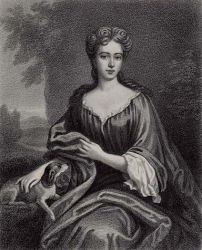 Lady Winifred Maxwell Lady Maxwell (1680-1749) is best remembered for helping her husband, William Maxwell, 5th Earl of Nithsdale, escape from the Tower of London in 1716. William was a member of a Scottish Catholic family. He worked hard to dispel suspicion of himself in Scotland because of his Catholicism and his links with the Jacobites. However, he did come out in support of the Jacobites in the 1715 Uprising and joined with the Northumbrian Jacobites. He was captured with other Jacobites and sent to the Tower of London and found guilty of treason and sentenced to death. Winifred travelled to London the ask George I for clemency but was not successful. On the eve of her husband’s execution, Winifred, her maid, and two friends visited William at the Tower. Lady Winifred Maxwell Lady Maxwell (1680-1749) is best remembered for helping her husband, William Maxwell, 5th Earl of Nithsdale, escape from the Tower of London in 1716. William was a member of a Scottish Catholic family. He worked hard to dispel suspicion of himself in Scotland because of his Catholicism and his links with the Jacobites. However, he did come out in support of the Jacobites in the 1715 Uprising and joined with the Northumbrian Jacobites. He was captured with other Jacobites and sent to the Tower of London and found guilty of treason and sentenced to death. Winifred travelled to London the ask George I for clemency but was not successful. On the eve of her husband’s execution, Winifred, her maid, and two friends visited William at the Tower.
Winifred distributed a generous amount of drinking money to the guards, and then dressed William in women’s clothing. They all made their escape. William and Winifred hid in London until they could be smuggled to France.
|
|
.jpg) Isobel, Countess of Buchan Isobel, Countess of Buchan
Isobel MacDuff (1296-1358) left her husband, the Earl of Buchan (taking the finest warhorses with her) to fight for the Bruce, a cause of which her husband did not approve.
The earl went as far as to issue a warrant for her death.
She was captured by Edward and taken to England and was imprisoned in a small cage for four years.
Afterwards she retired to convent life.
|
|
.jpg) Isabelle of England and Christian, Lady Bruce Isabelle of England and Christian, Lady Bruce
Isabelle (1285?-1313?) [shown], wife of Edward II of England, took up arms against her husband and his supporters.
When Edward III came to the throne, he forced Isabelle to flee to Scotland, where, during the ensuing war, she travelled with a defending troop of like-spirited women.
They included two sisters of Nigel and Robert Bruce (Christian, Lady Bruce and Isobel, Countess of Buchan). Christian, Lady Bruce, defended Kildrummy Castle when it was besieged by the English.
|
|
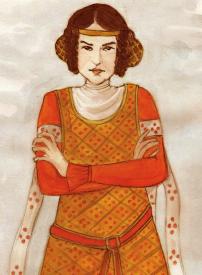 Black Agnes Lady Agnes Randolph (1300?-1369?) was the wife of Patrick the 4th Earl of Dunbar and the 2nd Earl of March. Black Agnes Lady Agnes Randolph (1300?-1369?) was the wife of Patrick the 4th Earl of Dunbar and the 2nd Earl of March.
In her youth, she fought for the Bruce, but is better remembered for the later defense of her castle. In 1334, Black Agnes, daughter of the great Randolf, Earl of Moray successfully held her castle at Dunbar against the besieging forces of England’s Earl of Salisbury for over five months.
She is celebrated in a folk song and Sir Walter Scott wrote, “From the record of Scottish heroes, none can presume to erase her.”
|
|
|
Our Annual General Meeting - October 13, 2016
|
|
.jpg)
The Society’s AGM was held October 13th in conjunction with our 4th annual Scots-toberfest celebration at Haus Murphy’s in Glendale. Following plates of potato pancakes, schnitzel, sauerbraten, bratwurst and spätzle, we pushed our chairs back for several agenda items.
VP Paul Bell explained that the new name “Phoenix Scottish Games” was easier to remember and differentiated us from the other similar (but not equal!) events across the State. The new date of March 4th and 5th will help with the heat issues, and not conflict with the big Irish weekend. He also introduced Patti King of Advanced Business Professionals who will be representing the Society with sponsors this season.
President Don Finch introduced Scott Taylor, Owner of F.C. Arizona, a new professional men’s soccer team that will be playing at MCC Stadium beginning next March. Scott has asked for Scots across the Valley to fill the Tartan Zone at home games.
Treasurer Vicki Phegley presented a summary of our results for the year-ended June 30th, 2016. The good news is that we won’t have to form a committee to find ways to spend a Surplus!
 |
|
Anam Cara Awards Gala
|
|
On November 15th, the Irish Cultural and Learning Foundation presented its annual Anam Cara Award to Mary Moriarty, former Operations Manager of the Irish Cultural Center, and a great friend of the Caledonian Society.
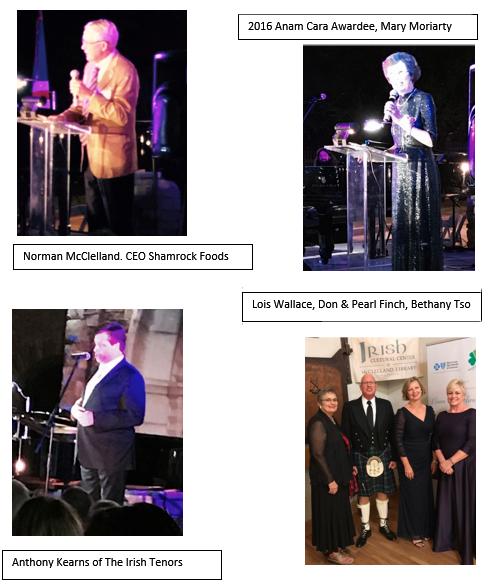
Lois Wallace, Bethany Mathers Tso and Don & Pearl Finch were honored to represent the Society.
|
|
COMING EVENTS & Highland Games in Arizona and Bordering States
Games Calendar compiled by Clan Campbell Society NA
| November 4-6 |
TUCSON CELTIC FESTIVAL & HIGHLAND GAMES Tucson |
| November 4-6 |
Moab Celtic Festival Moab UT |
| November 13 |
RAF CADET MEMORIAL CEREMONY AND LUNCH |
| December 3 |
ST. ANDREW'S DAY DINNER & DANCE |
| January 21 |
ROBBIE BURNS SUPPER - DUBLINER PUB |
| March 4-5 |
PHOENIX SCOTTISH GAMES - our new name! |
|
|
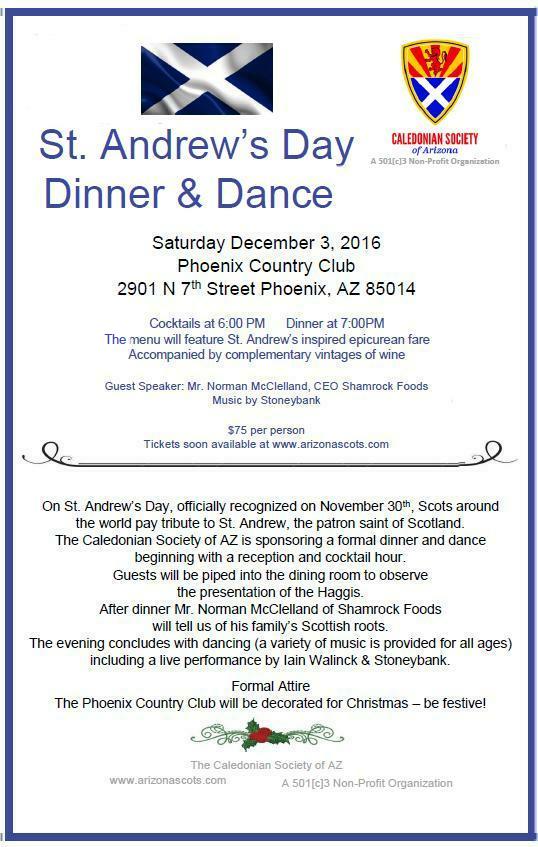
Please advise us by email of the names of those in your party, and the names of other attendees with whom you wish to sit.
|
|
Five Facts About St. Andrew's Day You Need to Know
By Emma Henderson, The Independent, 30 November 2015
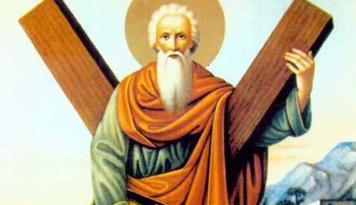 Considered Jesus' first disciple, Andrew did not become the official patron saint of Scotland until about 1,300 years after his death - and never actually set foot in the country during his lifetime Considered Jesus' first disciple, Andrew did not become the official patron saint of Scotland until about 1,300 years after his death - and never actually set foot in the country during his lifetime
- St Andrew is not just the patron saint of Scotland
He is the patron saint of Greece, Russia, Italy’s Amalfi and Barbados. As well as other countries, he's the patron saint of singers, spinsters, maidens, fishmongers, fishermen, women wanting to be mothers, gout and sore throats. St Andrew is also the patron saint of the Order of the Thistle, one of the highest ranks of chivalry in the world, second only to the Order of the Garter.
- He was Jesus' first disciple
Andrew was a fisherman before he and his brother Simon Peter became two of the 12 disciples of Jesus. He was baptized by John the Baptist and was the first disciple of Jesus. In the Greek Orthodox tradition, he is known as "Prōtoklētos" (Πρωτόκλητος) - literally "the first-called".
- He was crucified on an X-shaped cross
St Andrew was crucified on 30 November 60AD, by order of the Roman governor Aegeas. He was tied to an X-shaped cross in Greece, and this is represented by the white cross on the Scottish flag, the Saltire, since at least 1385.
- People took pilgrimages to the site of some of his remains
Purported relics of St Andrew, including a tooth, kneecap, arm and finger bone, meant St Andrew’s became a popular medieval pilgrimage site up until the 16th century - when they were destroyed in the Scottish Reformation. In 1870, the Archbishop of Amalfi sent an apparent piece of the saint's shoulder blade to Scotland, where it has since been stored in St Mary's Cathedral in Edinburgh
- St. Andrew was not Scottish
The patron saint was born in Bethsaida, in Galilee, which is now Israel. His remains were moved 300 years after his death to Constantinople, now Istanbul, by the Emperor Constantine. While he was generally revered in Scotland from around 1,000 AD, he didn't become its official patron saint until the signing of the Declaration of Arbroath in 1320. |
Membership Renewal Reminder
Dues are still only $25 Single and $40 Family. This admits you to all our wonderful monthly events with food and entertainment provided. Payments received in November or December of 2016 include full year membership for 2017.
It’s easy to pay by credit card or PayPal, just jump to the Membership Page
Society Gatherings
Regular membership gatherings are usually held the second
Thursday of each month at the Irish Cultural Center,
1106 N. Central Ave., Phoenix, AZ. beginning at
6:30 pm. Please check our website for further details.
|
|
Caledonian Society Officers
|
|
|